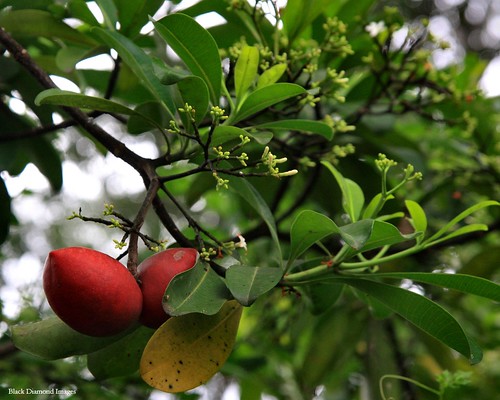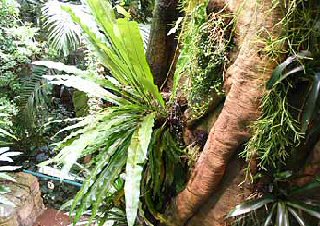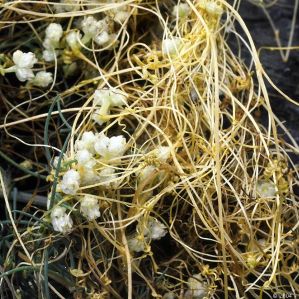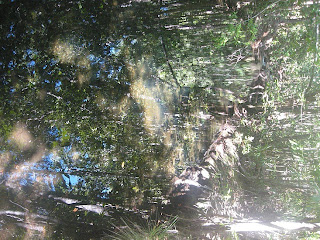Altogether there is 21 slides to present
Slide1 : Elaine
Slide2 : Shawn
Slide3 : Shawn
Slide4 : Douglas
Slide5 : Elaine
Slide6 : Elaine
Slide7 : Elaine
Slide8 : Elaine
Slide9 : Elaine
Slide10 : Douglas
Slide11 : Douglas
Slide12 : Douglas
Slide13 : Zafirah
Slide14 : Zafirah
Slide15 : Li Ping
Slide16 : Li Ping
Slide17 : Li Ping
Slide18 : Li Ping
Slide19 : Zafirah
Slide20 : Shawn
Slide21 : Together ( I think )
The slides will be in the mail as an attachment. Please check out the slides because there are some changes. Try to remember the contents ( if possible ). Thanks.
Tropical Monsoon Forests
2010/2011 TWSS Geography Project Group 2
Sunday, February 6, 2011
Saturday, January 8, 2011
Diversity of the plant species and its density
Prologue
Monsoon forest, also called dry forest or tropical deciduous forest, open woodland in tropical areas that have a long dry season followed by a season of heavy rainfall. The trees in a monsoon forest usually shed their leaves during the dry season and come into leaf at the start of the rainy season. Many lianas (woody vines) and herbaceous epiphytes (air plants, such as orchids are present. Monsoon forests are especially well developed in Southeast Asia and are typified by tall teak trees and thickets of bamboo.
Monsoon forest, also called dry forest or tropical deciduous forest, open woodland in tropical areas that have a long dry season followed by a season of heavy rainfall. The trees in a monsoon forest usually shed their leaves during the dry season and come into leaf at the start of the rainy season. Many lianas (woody vines) and herbaceous epiphytes (air plants, such as orchids are present. Monsoon forests are especially well developed in Southeast Asia and are typified by tall teak trees and thickets of bamboo.
Plants of the Tropical Rainforest
Trees tower over a tropical rainforest, forming a canopy that shades the forest floor. Numerous epiphytes, plants that live on trees, live in this canopy, including orchids and mosses. Shade-loving plants, including ferns, shrubs and vines dot the forest floor among the fallen leaf litter of the canopy trees. Modern medicine owes much to the plants of the rainforest, since many pharmaceutical drugs originated there, such as curare and quinine.
Density
“The factors determining species commonness and rarity are poorly understood, particularly in highly diverse communities. Theory predicts that interactions with neighbors of the same (conspecific) and other (heterospecific) species can influence a species’ relative abundance, but empirical tests are lacking. By using a hierarchical model of survival for more than 30,000 seedlings of 180 tropical tree species on Barro Colorado Island, Panama, we tested whether species’ sensitivity to neighboring individuals relates to their relative abundance in the community. We found wide variation among species in the effect of conspecific, but not heterospecific, neighbors on survival, and we found a significant relationship between the strength of conspecific neighbor effects and species abundance. Specifically, rare species suffered more from the presence of conspecific neighbors than common species did, suggesting that conspecific density dependence shapes species abundances in diverse communities. “
Abstract taken from http://www.sciencemag.org/content/329/5989/330.abstract
Help from: http://www.suite101.com
Friday, December 31, 2010
Diversity of plant species and density
-The Tropical Monsoon Forest-
Diversity of plant species There are fewer species of plants in the Tropical Monsoon forest compared to A tropical rainforest due to the inconsistent rainfall.
-About 202 species of plants can be found in one hectare of the forest
Trees
Most of them are hardwoods and some are commercially valuable species such as
-(Sandal wood used for making incense )
-(Sal is a important source of fuelwood )
-(Teak can be used to make furnitures )

Bamboos and grasses are common species found in the undergrowth and Many lianas (woody vines) and air plants, such as orchids are present.
Density
Plant growth is abundant but its less dense compared to a tropical Rainforest.
Hence
-Trees do not grow as closely compared to the tropical rainforest, resulting in their crowns not interlocking to form a continuous canopy.
-Sunlight can filter through the gaps , resulting in a dense undergrowth comprising of bamboos and grasses as they get sufficient sunlight.
During the wet season, The monsoon forest is luxuriant and dense as leaves on the plants are more abundant , but during the Dry season, plants loses their leaves and the forest appears sparse.
Images from ,
google.com
travelpod.com
wikipedia.org
Tropical Monsoon Forests
Tropical Monsoon Climates
What is it?
A tropical Monsoon Climate, occasionally also known as a tropical wet climate or tropical monsoon and trade-wind littoral climate.
-The climate have a monthly mean temperatures above 18°C in every month of the year and features distinct wet and dry seasons.
-Have High annual rainfall and temperatures
-Experienced by countries between 10° and 25° North and south of the equator.
-Some notable cities with this type of climate include (Mangalore, India ) and (Yangon, Myammar) .
Distribution
Tropical monsoon climates are most commonly found in South Asia and West Africa. However, there are sections of Southeast Asia, the Caribbean, North America, and South America that also features this climate.
Conditions
Temperatures about 26°C while annual rainfall is over 1500mm
Info from
-google.com
-Wikipedia.org
What is it?
A tropical Monsoon Climate, occasionally also known as a tropical wet climate or tropical monsoon and trade-wind littoral climate.
-The climate have a monthly mean temperatures above 18°C in every month of the year and features distinct wet and dry seasons.
-Have High annual rainfall and temperatures
-Experienced by countries between 10° and 25° North and south of the equator.
-Some notable cities with this type of climate include (Mangalore, India ) and (Yangon, Myammar) .
Figure 9.4 Climograph for
Mangalore, India
Mangalore, India
Lat/Long = 12.53o N, 74.52o E
Average Annual Temperature (oC) = 27.05
Annual Temperature Range (oC) = 3.6
Total Annual Precipitation (mm) = 3409.2
Summer Precipitation (mm) = 3115.9
Winter Precipitation (mm) = 293.3
Average Annual Temperature (oC) = 27.05
Annual Temperature Range (oC) = 3.6
Total Annual Precipitation (mm) = 3409.2
Summer Precipitation (mm) = 3115.9
Winter Precipitation (mm) = 293.3
Example of a climograph of Mangalore, India
Distribution
Tropical monsoon climates are most commonly found in South Asia and West Africa. However, there are sections of Southeast Asia, the Caribbean, North America, and South America that also features this climate.
Conditions
Temperatures about 26°C while annual rainfall is over 1500mm
Info from
-google.com
-Wikipedia.org
Thursday, December 23, 2010
Tuesday, December 21, 2010
zafirah
Leaves
Broad and large, their leaves have drip tips with a waxy leathery or hairy texture. The drip tips drain off rainwater. During hot and dry seasons, trees shed their leaves to overcome drought.


Flowers and Fruits
Many of the tree species flower and bear fruit during dry season while they are leafless.



credits: http://www.slideshare.net/wong_teck_kiong_nicholas/tropical-forests-3n-elective-geography
& google images.
Broad and large, their leaves have drip tips with a waxy leathery or hairy texture. The drip tips drain off rainwater. During hot and dry seasons, trees shed their leaves to overcome drought.


Flowers and Fruits
Many of the tree species flower and bear fruit during dry season while they are leafless.



credits: http://www.slideshare.net/wong_teck_kiong_nicholas/tropical-forests-3n-elective-geography
& google images.
Structure of the Forest
Overview
It has three vertical layers unlike Tropical Rainforest, which has five. This is because the trees found in the Monsoon forest are not as tall the ones found in Tropical Rainforest as it lack of water during the dry seasons.
Canopy layer
The height ranges from 25m to 30m. Unlike tropical rainforest, the trees in the monsoon rainforest are more spread out.Plants such as creepers, vines, epiphytes and parasite plant can be found there.

Creeper

Vines

Epiphytes

parasite plants
Understorey layer
They are about 15m in height
Undergrowth
It is less dense during the dry season. However during the wet season grasses and bamboo thickets grow densely there.

bamboo thrickets
Credits : http://www.google.com/
It has three vertical layers unlike Tropical Rainforest, which has five. This is because the trees found in the Monsoon forest are not as tall the ones found in Tropical Rainforest as it lack of water during the dry seasons.
Canopy layer
The height ranges from 25m to 30m. Unlike tropical rainforest, the trees in the monsoon rainforest are more spread out.Plants such as creepers, vines, epiphytes and parasite plant can be found there.

Creeper

Vines

Epiphytes

parasite plants
Understorey layer
They are about 15m in height
Undergrowth
It is less dense during the dry season. However during the wet season grasses and bamboo thickets grow densely there.
bamboo thrickets
Credits : http://www.google.com/
Wednesday, December 15, 2010
Bark, Branches and roots.
Bark and Branches
The thick and coarse bark of the trees protect the trunk from heat and dryness during the dry season. The thick bark also helps the trees to withstand the extreme heat from natural forest fires which break out occasionally.The branches of the trees of a tropical monsoon forest are located around the middle of the trunks, instead of near the top. As the trees grow less densely than in a tropical rainforest, sunlight is able to reach the lower parts of the forest.
Here are some example of thick bark and branches:
Picture credits to www.google.com
Roots
The trees have deep roots to tap water sources deep under the ground because rainfall is not regular throughout the year.Some example of deep roots:
Picture credits to www.google.com
Tuesday, November 30, 2010
How is the project going to be done?
Post information that you are assign to :
Shawn - Distribution and the introduction of the tropical monsoon climate.( Textbook Pg 44 - 45)
*introdution to the tropical monsoon climate can be explain briefly. In diagram or in words
*Distribution can be explained in a a diagram from the textbook or other webs.
*The conditons of a tropical monsoon climate can be explained using a climograph.
Douglas - Diversity of the plant species and density.(Textbook Pg 47)
Zafirah - Leaves and flowers and fruits.(Textbook Pg 48)
*Use pictures to explain.
Li Ping - Bark and branches and roots.(Textbook Pg 48)
*Use pictures to explain.
Elaine - Structure - Canopy,Understorey an undergrowth layer. (Textbook Pg 46)
*Use pictures and diagrams to explain.
> Post your findings on this blog before December 22th ( extended )
> Credit any source that you have taken from
> Videos can also be used.
> All the information will be compiled into a powerpoint for presentation. - You will not be allow to read from the slides when presenting.
> The topics that you are doing is what you will be presenting.
>Try to write the findings in your own words.
Thanks
Elaine.
Shawn - Distribution and the introduction of the tropical monsoon climate.( Textbook Pg 44 - 45)
*introdution to the tropical monsoon climate can be explain briefly. In diagram or in words
*Distribution can be explained in a a diagram from the textbook or other webs.
*The conditons of a tropical monsoon climate can be explained using a climograph.
Douglas - Diversity of the plant species and density.(Textbook Pg 47)
Zafirah - Leaves and flowers and fruits.(Textbook Pg 48)
*Use pictures to explain.
Li Ping - Bark and branches and roots.(Textbook Pg 48)
*Use pictures to explain.
Elaine - Structure - Canopy,Understorey an undergrowth layer. (Textbook Pg 46)
*Use pictures and diagrams to explain.
> Post your findings on this blog before December 22th ( extended )
> Credit any source that you have taken from
> Videos can also be used.
> All the information will be compiled into a powerpoint for presentation. - You will not be allow to read from the slides when presenting.
> The topics that you are doing is what you will be presenting.
>Try to write the findings in your own words.
Thanks
Elaine.
Saturday, November 13, 2010
Discussion
Please post all discussion on the blog.
After every post please sign off with your name.This is to ensure that you did contributed to the blog.
More information will be posted at a later date.
For now, read up on the topic.
Thanks
Elaine
After every post please sign off with your name.This is to ensure that you did contributed to the blog.
More information will be posted at a later date.
For now, read up on the topic.
Thanks
Elaine
Subscribe to:
Posts (Atom)














